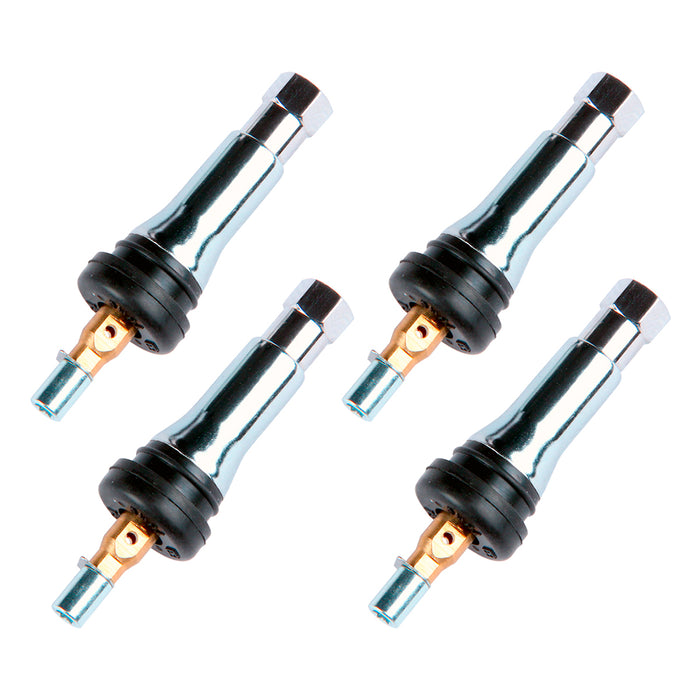

Service packs provide the sealing components for each applicable sensor (clamp-in or snap-in) and can be replaced just as valve stems are today. When the old seal is taken off the rim, it’s deformed and will not properly reseal if it’s retightened. The material in the seals has a “memory” of where it was placed and the amount of clamping force. The grommets around the base and nut of the sensor must be replaced every time the sensor is removed from the wheel. What should be replaced when a sensor is removed from the wheel? The flashing sequence, followed by continuous illumination of the warning lamp, will repeat at each subsequent vehicle start-up until the malfunction is corrected. For some TPMS, a system malfunction is indicated by a flashing of the low tire pressure warning lamp for a period 60 to 90 seconds, with the warning lamp remaining illuminated after the flash sequence.
#Tpms valve stem driver#
What does it mean if the lamp flashes on and off and then remains illuminated?Īll TPMS installed on 2008 model year vehicles and newer are required to detect and warn the driver when the system is not functioning properly (malfunction indicator).

This type of warning lamp response is likely caused by marginally low tire pressure that dips below the warning threshold overnight, but rises to an acceptable level as the tires heat up through vehicle operation or an increase in ambient temperature. On cold mornings, the warning lamp may illuminate for a short period of time and then extinguish. What does it mean if the warning lamp goes on and off? The lamp should extinguish after the tires are properly inflated. If the lamp comes on, the driver should inspect their tires and check the pressure as soon as possible. When the TPMS warning lamp on the instrument panel illuminates while the vehicle is being driven, it means that the system has detected at least one tire with a pressure at least 25% below the accepted minimum inflation pressure for the vehicle.

What does it mean if the TPMS warning lamp becomes illuminated?
#Tpms valve stem manual#
Always check the owner’s manual or turn on the ignition and look for the universal TPMS symbol to determine if the vehicle has TPMS. Remember, a snap-in valve-style TPMS sensor looks very similar to a standard tubeless tire valve. If this doesn’t work, try using the “learn and test” procedure with a TPMS tool. How do I know if a vehicle is equipped with direct TPMS?Īll vehicles manufactured after 2007 will have TPMS and can be identified with a lighted universal symbol on the dash that will illuminate when the ignition is turned to the “on” position. Some sensors may last as long as 10 years, while some may last only three to five years. If a sensor transmits the pressure every 10 seconds, it will not last as long as a sensor that transmits the pressure every 15 seconds. It depends on a variety of factors including the sample rate, drive cycle of the customer and even the environment. How long do the batteries in the sensors last? Indirect TPMS sensors can only assess tire inflation levels. What type of information is transmitted by the TPMS sensors?ĭirect TPMS sensors can transmit data such as their unique sensor ID, temperature and pressure, battery life and other diagnostic information. While NHTSA mandates that the TPMS must warn the driver when a tire is underinflated by 25%, it did not specify any standards for sensors or the equipment. There is no common standard for the TPMS sensors, with variations including frequencies, modulations, data structure, communications protocols, mechanical fitment and many other factors. What are the common standards for TPMS systems? The other 60% of vehicles require an activation or combination activation/scan tool. However, many of these relearn procedures cannot learn new sensor IDs or can learn only one new sensor ID per relearn cycle. Less than 40% of vehicles can reset the TPMS light without special tools. What percentage of the sensors and systems can “relearn” on their own?


 0 kommentar(er)
0 kommentar(er)
